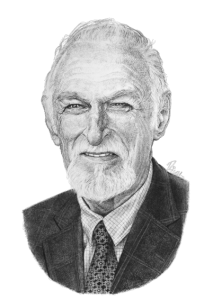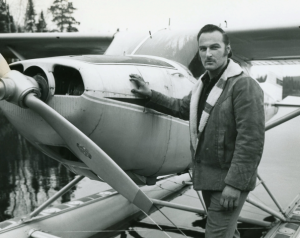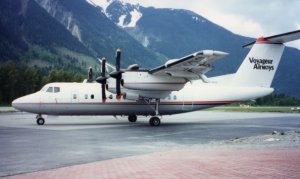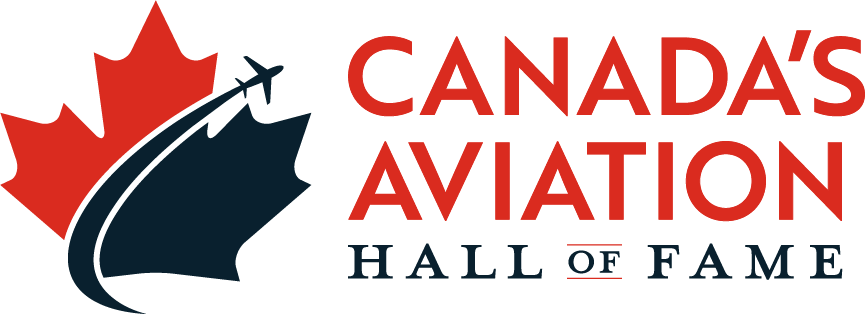Max Shapiro

Birth Date: October 20, 1938
Birthplace: Duluth, Minnesota
Year Inducted: 2025
For his contributions to aviation in Canada, notably through his work in northern Ontario and his leadership of Voyageur Airways, Max Shapiro was inducted into Canada’s Aviation Hall of Fame in 2025.

Born in 1938 and raised in a remote fly-in fishing camp in northwestern Ontario, Max Shapiro’s early years were shaped by isolation, self-reliance, and seeing the bush pilots who serviced the camp. With aviation looming large in his youth, young Max dreamed early of becoming a pilot himself, but childhood astigmatism left him believing this was not to be.
When he learned that his vision was not stopping him from flying, Max jumped straight into aviation. He soon earned both his commercial pilot’s license and aircraft maintenance engineer license and launched his career as a bush pilot. Over the next few years, Max gained valuable experience flying in Ontario’s north and across northern Canada on aircraft equipped with wheels, floats, and skis. He accumulated over 5,000 flight hours and became proficient on multiple aircraft types, including the Noorduyn Norseman, Beech 18, de Havilland Beaver, Cessna 180, and Piper Navajo, among others.
A pivotal moment in Max’s story came in 1974, when he took over a small flight school, Voyageur Airways, in North Bay. Although the outfit was struggling, over the coming decades Max would transform it in into a globally respected aviation company, specializing in air ambulance, special mission aircraft, humanitarian operations, and aircraft maintenance and modification. With so many responsibilities, it was soon clear to Max that he could best serve Voyageur by stepping back from the cockpit and, under his leadership, the company grew to become a hub of innovation, constantly adapting to market demands.
One of the hallmarks of Voyageur’s success – its stability and consistent performance – reflect Max’s strategic foresight. He grew the business through diversification, from training pilots to launching scheduled flight services and securing complex logistics contracts. Max also instilled a rigorous safety culture, formalized through a Safety Management System, which was reinforced informally across all levels of the organization. Equally worth noting in any discussion of Voyageur’s success, is that Max’s management style was marked by empowerment, innovation, and risk management; he believed in identifying and nurturing talent, providing individuals with both the freedom to lead and the support to grow, and he was soon known for mentoring future aviation leaders.
From an operational standpoint, Voyageur’s entry into scheduled services during the 1980s facilitated vital links between northern communities and Toronto’s Island Airport. At its height this effort connected over a dozen communities. Under Max’s guidance, Voyageur also served an array of critical clients, including the Canadian and U.S. departments of defence, NATO ministries, Transport Canada, and scientific organizations, such as the British Antarctic Survey.
The breadth of these relationships was made possible in part because Max has demonstrated throughout his career a unique ability to bridge gaps between pilot and maintenance staff. As both a licensed pilot and engineer, he recognized the importance of synergy between these roles and implemented organizational practices to ensure seamless communication and mutual respect. And, as a result, he was able to position Voyageur to take on a wide variety of clients. He also believed strongly in single-role focus for safety-critical roles; once staff entered management, they ceased operating aircra or conducting maintenance directly, a rule Max followed himself. Max’s influence led to the creation of a Design Approval Organization (DAO) within Voyageur, allowing it to independently conceptualize and implement aircraft modifications. This capability positioned Voyageur as a leader in the special mission aircraft sector. Their engineering innovations include a long-range fuel system for the Dash 8 aircraft and numerous other mission-specific modifications. Further, such a working environment also explains how Voyageur pioneered Canada’s modern fixed-wing air ambulance system, replacing makeshift mercy flights with medically equipped aircraft capable of proper in-flight treatment. The development of Multi Patient Transport Units (MPTUs) and infection control protocols later proved crucial in global health crises like the SARS and COVID-19 outbreaks.
One of Max’s crowning achievements was securing a contract with the Netherlands Ministry of Defence (NMOD) from 2007 to 2014. Voyageur modified and operated a Dash 7 aircraft, equipped with an advanced self-protection system. This complex endeavour required coordination with multiple governments and military bodies, and Voyageur was the only civilian outfit worldwide to have operated such an aircraft. The company’s support of NATO’s ISAF mission encompassed both its relationship with NMOD and other contributors to the international force in Afghanistan. After Max personally oversaw setup of the Dutch operation in 2006, Voyageur went on to deploy several additional aircraft and over fifty Canadian staff under other contracts with the UN and ISAF members. These contributions reflected Max’s commitment to operational excellence, ensuring mission success while maintaining strict civil aviation safety standards. In a historic moment, Voyageur also deployed an all-female crew, including maintenance engineers, to Afghanistan.
During the 2014–16 Ebola outbreak in West Africa, Voyageur once again demonstrated its humanitarian capacity. At the UN’s request, Max deployed CRJ-200 aircraft and Canadian crews to support medical logistics in affected regions. The infection control measures Max had pioneered during earlier air ambulance operations, such as in-flight PPE use and temperature screening, proved instrumental in containing the outbreak during transport operations.
Max’s influence extended beyond his company. When DND scaled back flying operations in North Bay, Max worked with local leaders to convert the military facilities into commercial hangars. This attracted Bombardier, and Max soon reached an agreement with Tom Appleton (CAHF, 2022) to relocate final assembly of the Canadair CL-415 aircraft to one of those hangars. This collaboration not only preserved local jobs but established North Bay as a key player in Canadian aerospace. Today, Voyageur employs over 400 people and remains a pillar of the North Bay community. Such contributions to aviation have been of lasting benefit to Max’s community and to Canada more broadly – something that is perhaps best exemplified by Voyageur’s role in the Canadian Department of National Defence's MAISR (Manned Airborne Intelligence, Surveillance, and Reconnaissance) program. Although this major contract was awarded after Max’s retirement, it was built on foundations he had laid. The MAISR project drew on Voyageur’s decades of experience with King Air aircraft, its design and modification capabilities, and its logistical expertise in supporting operations globally to stand as a powerful legacy of Max’s vision and leadership.
Max’s work in the aviation community has been widely recognized. He has served on the Air Transport Association of Canada board, received certificates of recognition from both the U.S. Army and the Netherlands Ministry of Defence for NATO ISAF contributions, and has had a critical care unit at North Bay Regional Hospital named in honour of he and his wife Lorraine. These and other honours point to the many ways in which Max Shapiro’s career represents an extraordinary and enduring contribution to aviation in Canada and beyond. From bush pilot to international aviation pioneer, his legacy remains evident in the aircraft he helped design, the missions he supported, the lives he saved, and the leaders he mentored – collectively they stand represent just part of a legacy that continues to shape the future of aviation in Canada.

2025 Induction Video
To return to the Inductee Page, please click here.
